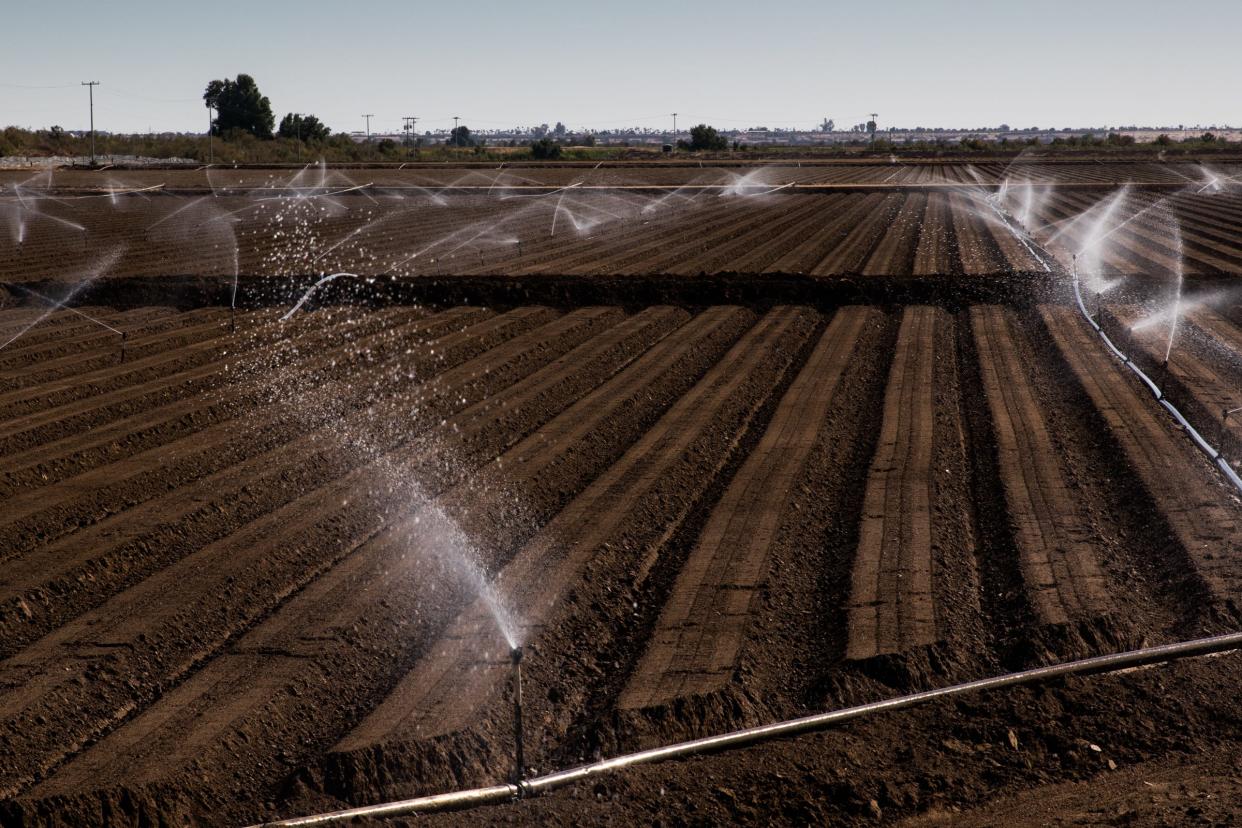Arizona farmers must use less water. Few of us truly understand what that takes

Some folks argue that farming has no place in Arizona. Especially now, as areas across the state grapple with depleting water supplies.
More than 70% of the water Arizona uses each year goes to agriculture, so indeed, some farmland is going to have to come out of production.
And the farms that remain will have to find additional ways to conserve.
But it would be a mistake to decimate agriculture in every part of the state, even if it might free water for others to use.
Yuma feeds the nation in winter
If you eat a salad in the winter, chances are it comes from Yuma. The area supplies the nation with leafy greens, and for good reason.
It’s one of the few places warm enough to grow them at this time of year.
And while some suggest that we could just source our produce from overseas, that is becoming increasingly dicey.
Consider the United Kingdom, which relies on farms in Spain and Morocco at this time of year for its lettuce, tomatoes and cucumbers.
Poor weather cut into yields this year, leaving most supermarkets in the UK unable to source enough produce to satisfy demand. Many stores have begun rationing purchases for at least the next few weeks.
Pinal helps keep milk on Arizona shelves
Ditto for the farms in Pinal County, which because of water supply cuts have already fallowed thousands of acres this year.
This area supplies a significant portion of the state’s milk, and while there has been plenty of uproar about the Saudis using water in La Paz County to grow alfalfa to feed their cows, most of what Pinal produces goes to nearby dairies – and eventually to supermarkets in Phoenix and Tucson.
Without those dairies, we’d have to source much more of our milk, cheese and other dairy products from elsewhere.
Which would come with increased costs and a greater environmental impact – both in the carbon spewed to transport it long distances, and in the water consumed to grow forage crops elsewhere.
More acres would likely need to be put into production to feed the same number of cows, considering that Arizona has some of the highest alfalfa yields in the nation.
There's a reason farmers grow what they do
If we’re not willing to make these trade-offs, that means even us city dwellers have a stake in ensuring that Arizona agriculture makes a successful transition into a future with less water.
Granted, many presume that this is a simple matter of convincing farmers – by goodwill or by force – to plant crops that use less water. Some have suggested that Arizona outlaw alfalfa production to save water.
New paradigm:Your water bill will go up. That might not be all bad
But there’s a reason Arizona farmers grow alfalfa (or leafy greens or anything else, for that matter): There’s a market for it. Farmers can’t invest in seed and equipment and hope at harvest time that they can find a buyer to recoup those costs.
Whatever grows needs a buyer and the infrastructure to process what’s produced. And while niche products like agave may command higher prices, they can only support so much demand.
That’s why many farmers also rely on commodities like alfalfa – and must produce high enough yields from those commodities – to pencil out a living.
Promising water research is underway
Granted, a lot of research is underway to help farmers use less water and remain economically viable.
Central Arizona Project has already proven that gravity-fed drip irrigation can use 30% to 50% less water, depending on the crop, without compromising yields. Its pilot project is now facing a critical test on alfalfa in the Yuma area, which like many other areas of Arizona struggles with salinity.
Most farmers there rely on flood irrigation to flush these damaging salt deposits away from plants. If drip irrigation can keep them at bay, more farmers might be willing to give the technology a try.
Meanwhile, the University of Arizona has created an initiative to help farmers survive a drier future.
Though its scope is still taking shape, researchers affiliated with the university have already begun delving into key questions, like whether low water-use cover crops could produce adequate nutrition for cows (even if they may never be as good as alfalfa).
Couple this and other research with millions in state and federal funding – plus a growing cadre of farmers eager to try new things – and Arizona fields could become laboratories for innovation.
Are we willing to make this commitment?
But I’m not sure anyone outside of agriculture realizes what that requires.
If we’re serious about finding ways to minimize the impacts when we take land permanently out of production, and to ensure the fields that remain use less water than before, a one-time grant won’t cut it.
Arizona must accelerate the research that is being conducted, get more fields in on the experiments, and when we figure out what works, train ag workers to get the most out of it.
Farmers alone can’t change this paradigm.
It’s going to take a sustained commitment from all of us.
Reach Allhands at joanna.allhands@arizonarepublic.com. On Twitter: @joannaallhands.
If you love this content (or love to hate it – hey, I won't judge), why not subscribe to get more?
This article originally appeared on Arizona Republic: Arizona farmers must use less water. That requires a commitment

